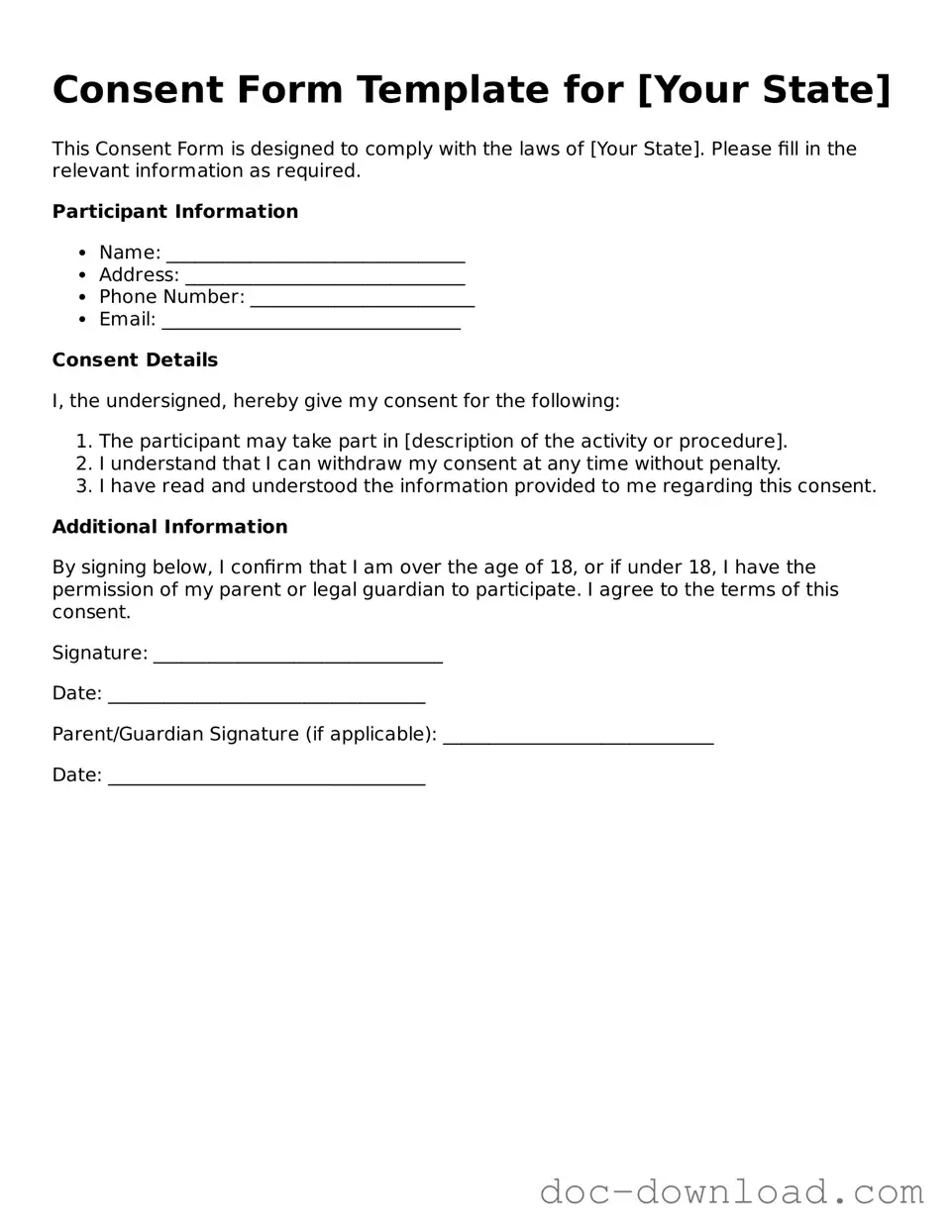The informed consent document is similar to a waiver form. Both documents serve to protect the party providing the service or treatment from liability. A waiver typically releases the provider from responsibility for certain risks associated with an activity. Informed consent, on the other hand, involves a more comprehensive understanding, where the participant acknowledges the risks and agrees to proceed based on that understanding. Both forms require clear communication and an acknowledgment of the participant's voluntary choice.
Another document akin to the informed consent form is a release form. A release form is often used in situations where an individual agrees to relinquish their right to pursue legal action against another party. Like informed consent, a release form requires the individual to understand the implications of their decision. Both documents emphasize the importance of voluntary participation and informed decision-making, ensuring that individuals are aware of their rights and the potential consequences of their actions.
Confidentiality agreements share similarities with informed consent forms, particularly in contexts where sensitive information is involved. Both documents require individuals to acknowledge the importance of privacy and the handling of personal data. Informed consent often includes a confidentiality clause, ensuring that participants understand how their information will be used. Similarly, confidentiality agreements focus on the protection of information, requiring parties to agree on the terms of sharing and safeguarding sensitive data.
Release of information forms are also comparable to informed consent documents. These forms allow individuals to authorize the sharing of their personal information with third parties. Informed consent requires participants to understand how their information will be used in a specific study or treatment. Both documents necessitate clear communication regarding the scope of information shared and the potential risks involved in sharing such information.
Participant agreements are another type of document similar to informed consent forms. These agreements outline the expectations and responsibilities of both the participant and the researcher or provider. Like informed consent, participant agreements emphasize the importance of understanding the terms of involvement in a study or treatment. Both documents foster transparency and mutual understanding, ensuring that all parties are aware of their roles and commitments.
The Texas Transfer-on-Death Deed is a critical tool for property owners, as it allows them to transfer their assets smoothly and directly to beneficiaries, bypassing the often arduous probate process. This approach not only simplifies estate planning but also provides peace of mind, knowing that their wishes will be honored after their passing. For further insights on how to complete this essential form, you can visit todform.com/blank-texas-transfer-on-death-deed/.
Medical release forms also bear resemblance to informed consent forms. These forms authorize healthcare providers to disclose a patient’s medical information to other entities, such as insurance companies or specialists. Informed consent requires patients to understand the implications of sharing their medical history. Both documents prioritize the patient's autonomy and ensure that individuals are informed about how their medical information will be utilized.
Employment contracts can also be compared to informed consent forms, particularly in the context of job-related risks. Both documents require individuals to acknowledge and accept specific terms and conditions. Informed consent often involves understanding the risks associated with a medical procedure or study, while employment contracts outline the expectations and responsibilities of the employee. Both documents emphasize informed decision-making and the importance of understanding the implications of one's choices.
Finally, liability release forms are similar to informed consent documents in that they both address the potential risks associated with an activity. Liability release forms often require individuals to acknowledge the risks involved in participating in a particular event or activity. Informed consent similarly requires participants to understand the risks associated with medical procedures or research studies. Both documents serve to protect the provider or organizer from legal claims while ensuring that individuals make informed choices about their participation.
